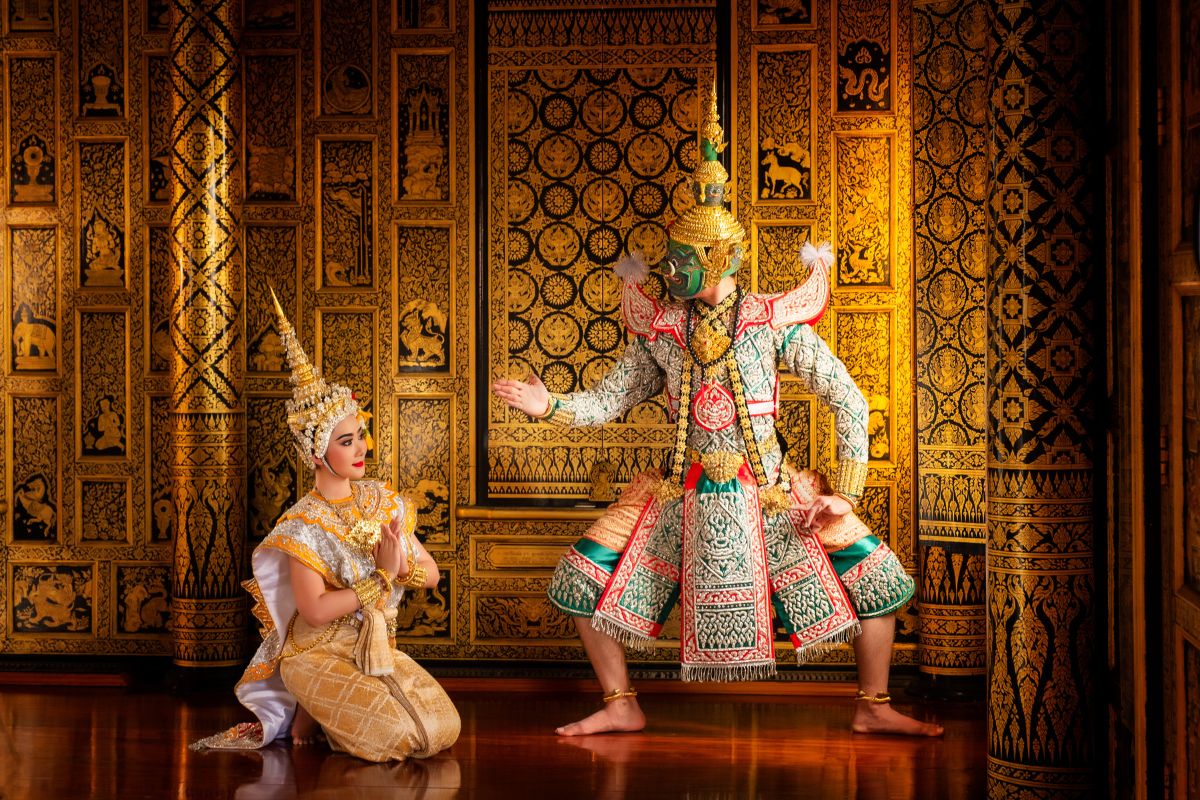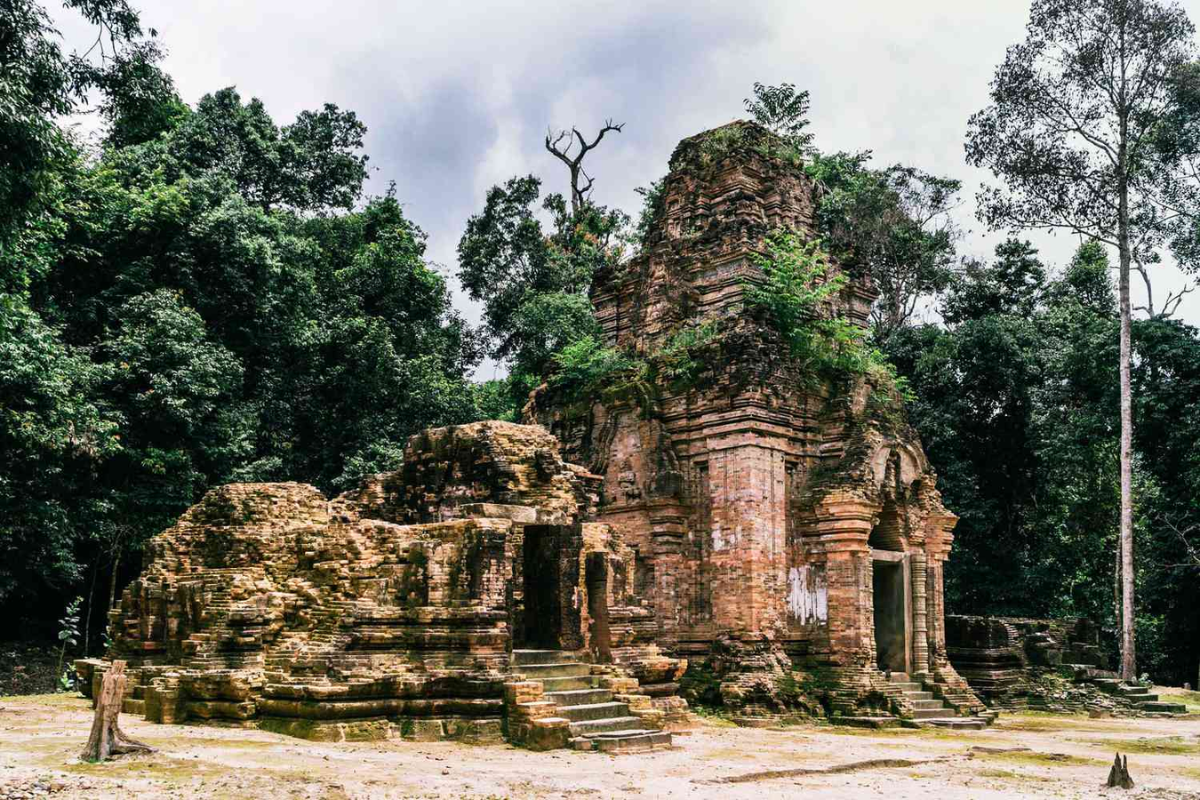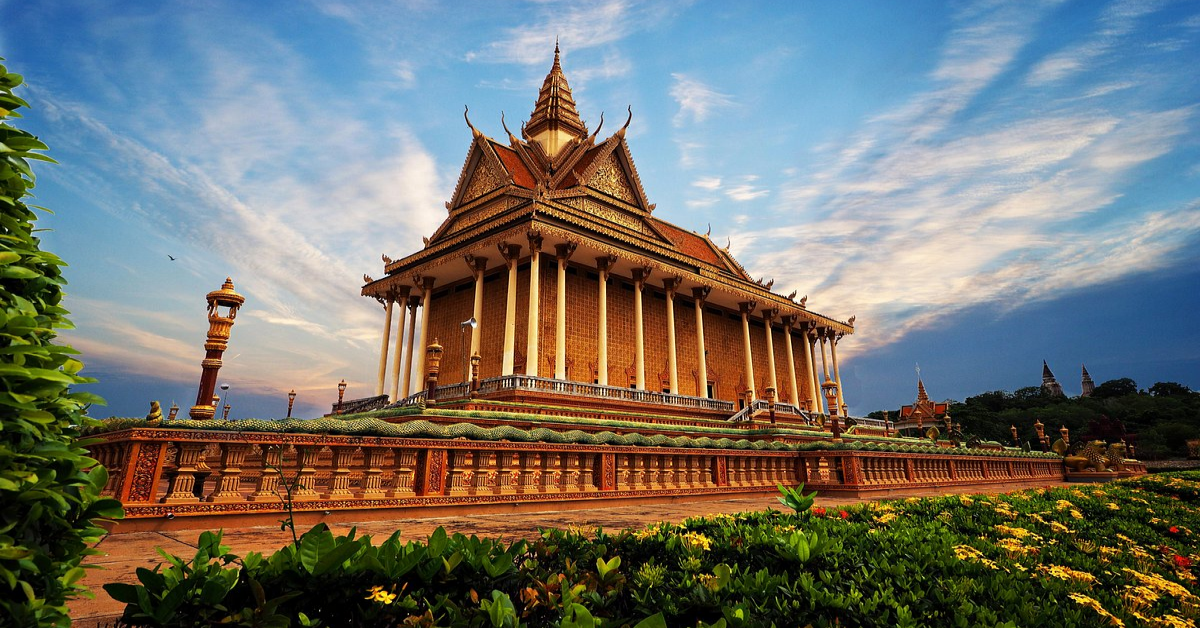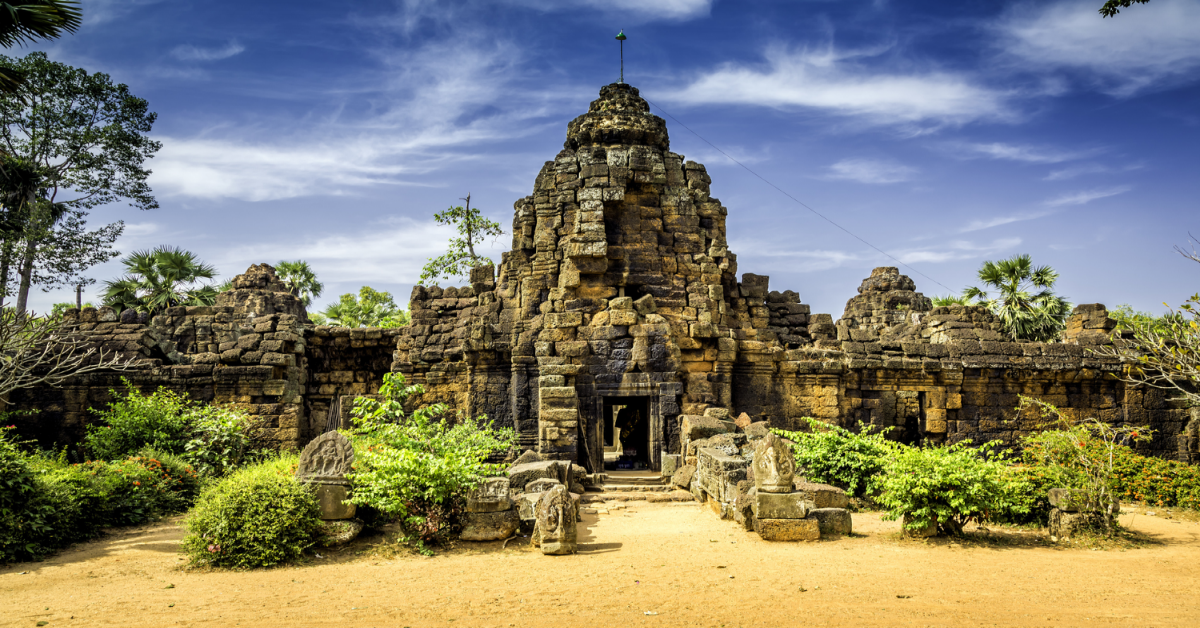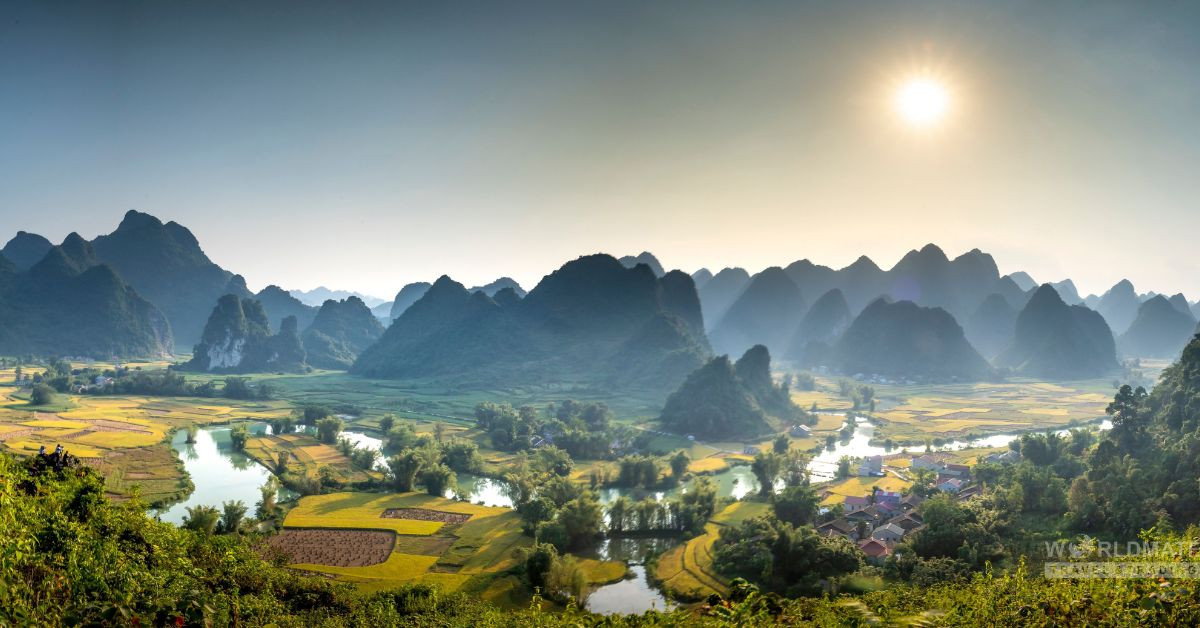All Must-Visit Destinations in Cambodia
Best known for the colossal temples of Angkor Wat and the brutal Khmer Rouge era of the 1970s, Cambodian history encompasses both some of humanity’s greatest artistic accomplishments and most horrific deeds.

While history draws most travelers here, Cambodia offers much more for those who linger beyond a short temple hop to Siem Reap.
Beyond the temples, Cambodia is a prime destination for Southeast Asia travels, charming all who visit. The coastline of sandy white beaches tempts sun-seekers, the jungle-swathed countryside attracts the intrepid, and the buzzing capital of Phnom Penh envelops visitors in the frenetic pulse of contemporary Cambodian city life.
Plan your sightseeing in this fascinating country with our list of the top places to visit in Cambodia.
1. Angkor Wat (Angkor Archaeological Park)

This temple city is the number one tourist spot in Cambodia. Accessed from Siem Reap, the temples of the Angkorian period are ambitious in scale and majestic in construction, making Angkor Wat one of the world’s must-see ancient sites.
Built between 802 and 1432, it was the largest city in the world during the medieval age and the powerhouse of the Khmer kings. The temple of Angkor Wat, the world’s largest religious building, is just one part of the site. The sprawling circuit of temples deserves three days to explore fully.
Highlights include the tree-root clasped temple of Ta Prohm (famous from the movie Tomb Raider), the Bayon Temple with its 216 stone-carved faces, Angkor Thom, and Preah Khan.
2. Phnom Penh

Cambodia’s capital is the frenetic heartbeat of the nation, with chaotic streets abuzz with motorbikes and car horns. Deserted during the Khmer Rouge era, Phnom Penh has bounced back to become one of Southeast Asia’s most dynamic cities.
This cosmopolitan destination boasts a café and restaurant scene unrivaled in the country. It’s also home to important historic sites that unravel Cambodia’s modern and ancient history.
The National Museum houses Khmer sculpture tracing the nation’s history from the pre-Angkorian age to the god-Kings of Angkor. The Royal Palace showcases traditional artistry, while Tuol Sleng Museum and the killing fields of Choeung Ek speak of the horrors under Khmer Rouge rule.
3. Koh Rong Samloem

Just off Cambodia’s south coast lies a scattering of islands as beautiful as their Thai counterparts but much less visited. Compared to the developed islands of Koh Samui and Phuket, Cambodia’s islands offer laid-back tropical bliss.
Koh Rong Samloem, one of the most beautiful islands, features the long, sandy Saracen Bay with beach hut resorts offering a welcome respite. It’s all about hammock-time here, but there’s plenty of scuba diving for the more active.
Access these islands from Sihanoukville.
4. Siem Reap

Street in Siem Reap
Siem Reap is often seen as a top place to visit in Cambodia due to its proximity to Angkor Archaeological Park, but the town itself offers more attractions beyond the temples.
This is Cambodia’s major activity center, with various tours available, from cycling trips around the lush countryside to Cambodian cookery tours. Shoppers will find plenty to explore, as central Siem Reap is filled with opportunities to browse traditional crafts.
Visit the Angkor National Museum before heading to Angkor Wat to learn about the site’s history. The exhibits explore the culture and artistry of the Khmer empire.
For evening entertainment, don’t miss Phare The Cambodian Circus. This internationally renowned circus troupe combines theater, acrobatics, and music in dazzling shows.
5. Ratanakiri

Ratanakiri offers a nature-filled reprieve for travelers suffering from temple fatigue. This is outback Cambodia, with endless red-dirt roads leading to ethnic minority villages, perfect for intrepid travelers.
The province is one of the best places in Cambodia for trekking. Spot gibbons at Veun Sai-Siem Pang Conservation Area, where overnight trips involve sleeping in hammocks and tracking buff-cheeked gibbons. Hike in Virachey National Park, home to elephants, tigers, and sun bears.
For relaxation, visit the emerald waters of Yeak Lom Crater Lake near Ban Lung town, a tranquil swimming spot. The waterfalls of Chaa Ong and Ka Tieng offer fun diversions and opportunities to get wet.
6. Prasat Preah Vihear

While Angkor Wat may gain all the glory, Prasat Preah Vihear wins the prize for the most dramatic location. Sitting atop the Dangrek Mountains, with dizzying views across the Cambodian floodplains, this temple complex features intricately carved pavilions linked by long causeways, originally built to honor the god Shiva.
The temple is near the border with Thailand and has been a point of contention between the two nations. The International Court of Justice ruled in Cambodia’s favor in 2013 after border disputes flared up between 2008 and 2011.
Tensions have eased, allowing this UNESCO World Heritage Site to reclaim its place on the tourist trail. Access is from Sra Em, though most visitors come on a day trip from Siem Reap (200 kilometers south).
7. Battambang

Temple in Battambang
The countryside around Battambang, with its rice fields and tiny villages, offers some of the most tranquil rural scenery in Cambodia. The area is also home to historic riches, making the city a popular destination for travelers.
History fans can visit the temples of Phnom Sampeau, Phnom Banan, and Wat Ek Phnom, all within day-tripping distance. The famed Bamboo Train, a single-line rail track where “carriages” made from wood and bamboo travel between Battambang’s east bank and the village of O Srav, is a popular activity.
Battambang itself is a sleepy city compared to the buzz of the capital, with a central district filled with colonial buildings. For those who found Phnom Penh’s hectic pace overwhelming, Battambang is a more approachable base.
8. Kampot

Kampot Riverside
The laid-back riverine town of Kampot exudes old-world charm. The compact central district is a joy to explore, with surviving shop-house architecture, some of which has been meticulously restored.
Kampot’s appeal lies in its relaxed atmosphere, often causing travelers to stay longer than planned. For the more active, it’s an excellent base for discovering the surrounding southern sights.
The old French summer getaway of Bokor Hill Station, with its abandoned church and eerie, empty shell of a once-grand hotel, is an easy day trip from town. The limestone caves of Phnom Chhnork and Phnom Sorsia, both housing old temples, are also nearby.
9. Tonlé Sap Lake

Tonlé Sap is Cambodia’s most important waterway and Southeast Asia’s largest freshwater lake. It is a vital source of food and irrigation for Cambodia and home to 170 floating villages that rely on fishing for their livelihood.
The houses, shops, churches, schools, and temples of these villages are built on buoy foundations of lashed-together barrels and bamboo, with all transport by boat. They offer a fascinating day of exploration.
One of the most interesting villages is Kompong Luong, near Pursat on Tonlé Sap’s western shore, though the most popular village to visit is Chong Kneas near Siem Reap.
10. Koh Kong Conservation Corridor
.png-image-iidvfhsu.png)
Tatai River
The Koh Kong Conservation Corridor stretches across Cambodia’s Cardamom Mountains, south of the border town of Koh Kong. The highlands, home to dense rainforest, winding rivers, and waterfalls, offer plenty of opportunities for hiking and boat tours.
Head to the Tatai River to soak up the lush surroundings and take a break from life. Boutique eco-resorts along the riverbank offer activities such as day hikes and kayaking.
Further south in the Cardamoms is the village of Chi Pat, an eco-tourism center with simple homestay and guesthouse accommodation. Activities range from multi-day treks into the forested mountains to wildlife-spotting river boat trips.
11. Kratie
.png-image-xtbayyaz.png)
Boat trip in Kratie
For the full Mekong experience, Kratie is the place to be. Spread along the banks of the mighty Mekong, Kratie has become a major destination for travelers due to its dolphin-watching tours.
The endangered Irrawaddy dolphins are endemic to the Mekong, and environmental measures have been implemented to help their dwindling numbers. Tourism has played a role in protecting the dolphins by offering an alternative economy to fishing.
To see the dolphins, head to Kampi, just north of Kratie, where plenty of boat tours are available.
12. Sambor Prei Kuk

This pre-Angkorian temple site dates back to the early 7th century when it was the capital of the Upper Chenla Empire. Over 100 brick temples dedicated to various Hindu gods sit within the forest, many half-swallowed by mammoth tree roots.
Archaeologically significant, the site contains some of Cambodia’s oldest surviving buildings. You don’t have to be an archaeology buff to appreciate the ethereal beauty of this tree-wrapped site.
Key temples include Prasat Sambor, Prasat Tao, and Prasat Yeay Peau, all featuring remarkably clear carvings and an ethereal ambiance provided by twisting tree trunks and coiling vines.
You can access Sambor Prei Kuk from Kompong Thom.
13. Banteay Chhmar

For an Indiana Jones-style temple exploration, Banteay Chhmar is unbeatable. This mammoth temple complex, consumed by surrounding jungle in Cambodia’s northwest, offers the perfect opportunity to discover highlights without the crowds.
Built by the 12th-century Angkorian king Jayavarman VII, the stone reliefs along its walls are some of the most intricately detailed in the country. Notable are the bas reliefs depicting Avalokiteśvara on the south wall and the battle scenes on the eastern walls.
The neighboring village offers simple homestay accommodation. Most visitors stay in Sisophon (60 kilometers south) or take a day trip from Siem Reap.
14. Mundulkiri
.png-image-cbeqimdq.png)
Mundulkiri's Elephant Valley Project
Adventurous travelers head to the hill country of Mundulkiri Province in Cambodia’s far east for wildlife spotting, village life, trail-bike tours, and the Elephant Valley Project.
The Elephant Valley Project offers visitors a chance to walk with the sanctuary’s elephants (no riding allowed) and provides local mahouts (elephant keepers) with a sustainable wage.
For adrenaline junkies, the Mayura zipline course skims over Bou Sra waterfall. Bird-watchers and wildlife spotters can tour Seima Protected Forest, home to gibbons, endangered black-shanked douc langurs, and plentiful birdlife.
The small town of Sen Monorom is the main base for travelers in Mundulkiri, within easy day-tripping distance to all attractions.
When is the best time to visit Cambodia?
Most visitors who arrive in Cambodia are heading to the Angkor Wat temples as their main destination - so it makes sense that the best time to visit Cambodia is when the temples are at their best. Weather-wise, the best time to visit Siem Reap and Angkor Wat is between December and February, when temperatures drop into the high 20s and the humidity is low enough to be bearable.
However, these months are part of the cool season, which is also high season in the country - this means higher prices, bigger crowds, and more expensive airfares. For better prices and slightly smaller crowds, consider arriving in March or early April - while temperatures are rising fast at this time, the rainy season is just starting by then, so you should be able to still enjoy the outdoors.
Phnom Penh has hot and humid weather all year-round, with just a small dip in temperature and humidity dropping to around 70 percent during the cool season. This is also a good time to visit Koh Rong, Cambodia's best beach destination.

